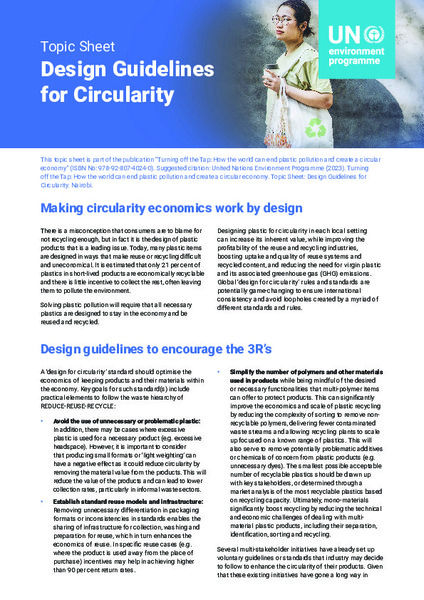Topic Sheet: Design Guidelines for Circularity

Date
2023-05Author
United Nations Environment Programme
Citation Tool
Bibliographic Managers
RT Generic T1 Topic Sheet: Design Guidelines for Circularity A1 United Nations Environment Programme YR 2023-05 LK https://wedocs.unep.org/20.500.11822/42233 PB AB TY - GEN T1 - Topic Sheet: Design Guidelines for Circularity AU - United Nations Environment Programme Y1 - 2023-05 UR - https://wedocs.unep.org/20.500.11822/42233 PB - AB - @misc{20.500.11822_42233 author = {United Nations Environment Programme}, title = {Topic Sheet: Design Guidelines for Circularity}, year = {2023-05}, abstract = {}, url = {https://wedocs.unep.org/20.500.11822/42233} } @misc{20.500.11822_42233 author = {United Nations Environment Programme}, title = {Topic Sheet: Design Guidelines for Circularity}, year = {2023-05}, abstract = {}, url = {https://wedocs.unep.org/20.500.11822/42233} } TY - GEN T1 - Topic Sheet: Design Guidelines for Circularity AU - United Nations Environment Programme UR - https://wedocs.unep.org/20.500.11822/42233 PB - AB -View/Open
Item Statistics
Display item statisticsMetadata
Show full item recordDescription
Solving plastic pollution will require that all necessary plastics are designed to stay in the economy and be reused and recycled. Designing plastic for circularity in each local setting can increase its inherent value, while improving the profitability of the reuse and recycling industries, boosting uptake and quality of reuse systems and recycled content, and reducing the need for virgin plastic and its associated greenhouse gas (GHG) emissions. Global ‘design for circularity’ rules and standards are potentially game-changing to ensure international consistency and avoid loopholes created by a myriad of different standards and rules.
Collections
Document Viewer
To read more, scroll down below.

